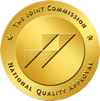Not all drugs are created equal, but they share a common trait: the potential for abuse. In basic terms what does this? It gets you high. The high looks different for different drugs, but it always alters the user’s brain chemistry. This typically comes through hijacking the brain’s reward system. There are 4 types of drugs that accomplish this, in a general sense.
So here we are exploring the four primary types of drugs that are commonly abused: depressants, stimulants, opioids, and hallucinogens.
Each category has its own unique impact on the body and brain, carries inherent risks, and, importantly, a path towards recovery.
1. Depressants
Depressants, including substances like alcohol, benzodiazepines (benzos), and barbiturates, function by slowing down brain activity. This category affects the body by enhancing the effects of the neurotransmitter GABA (gamma-aminobutyric acid), which promotes relaxation and reduces stress.
Naturally, these substances range from alcohol, derived from fermentation to plants containing sedative compounds. Synthetically, they are often created in laboratories for medical use, such as anxiety relief or to induce sleep.
Dangers
The dangers of depressants include impaired memory, judgment, and motor coordination, alongside increased risk of overdose, which can suppress breathing and heart rates fatally.
Withdrawal symptoms
can be particularly severe, ranging from anxiety, insomnia, seizures, and in extreme cases, life-threatening delirium.
Overdose
often presents as severe confusion, stupor, or coma.

2. Stimulants
Next, let’s consider stimulants like cocaine, amphetamines, and methamphetamine. These drugs increase activity in the brain, particularly enhancing effects of dopamine and norepinephrine.
Whether extracted from plants, such as coca leaves for cocaine, or concocted in labs like methamphetamine, stimulants dramatically increase energy levels, attention, alertness, and euphoria.
Dangers
The risks are profound. They can lead to dangerous increases in heart rate and blood pressure, and prolonged use may cause severe dental problems, extreme weight loss, and skin sores.
Overdoses
can manifest as heart attacks, strokes, and intense psychological distress.
Withdrawal
from stimulants is often characterized by depression, sleep problems, and intense cravings.
3. Opioids
Opioids are derived from the opium poppy or synthesized in labs to mimic natural opiate effects. This class includes drugs like heroin, morphine, and prescription pain relievers such as oxycodone and hydrocodone. They primarily work by binding to opioid receptors in the brain to block pain and promote a sense of well-being.
Dangers
The danger of opioids lies in their high potential for addiction and the risk of respiratory depression leading to fatal overdoses.
Withdrawal
symptoms can be intensely unpleasant, including severe muscle and bone pain, sleep disturbances, and gastrointestinal distress.
Overdose
symptoms often involve pinpoint pupils, unconsciousness, and failure of respiratory functions.
4. Hallucinogens
Lastly, hallucinogens such as LSD, psilocybin mushrooms, and PCP alter perception, mood, and a host of cognitive processes. These substances can be natural, like psilocybin, or synthetic, like LSD. They primarily affect serotonin levels in the brain, leading to altered sensory experiences and perceptions.
Dangers
While generally considered less addictive, the dangers of hallucinogens include the potential for terrifying thoughts and feelings, loss of control over what is real, and risk of psychological distress.
Withdrawal
symptoms are primarily emotional, such as depression and anxiety, and vary widely based on the substance.
Overdoses
particularly with substances like PCP, can lead to aggressive behaviors, psychosis, and dangerous increases in body temperature and heart rate.
Why Rehab for the 4 Types of Drugs?
Regardless of the type, addiction to these 4 types of drugs often requires structured intervention found in residential treatment centers. These facilities provide a safe environment for detox, followed by comprehensive therapy that addresses both the psychological and physical facets of addiction.
Rehabilitation programs for the 4 types of drugs are crucial in the treatment of addiction. Here are a few reasons you should consider a residential treatment center for you or a loved one if addiction is present.
1. Medical Supervision:
During detoxification and recovery, the physical effects of withdrawal can be intense and sometimes dangerous. Medical supervision ensures that individuals safely manage these symptoms and in comfort.
At EagleCrest Recovery, professionals monitor our client’s health, mitigate complications, and adjust treatments as necessary. This is particularly important for substances like opioids and depressants, where withdrawal can be particularly severe.
2. Separation from Addictive Lifestyle:
Rehab provides a crucial physical and psychological break from environments where substance abuse occurs. This separation helps individuals avoid triggers and break the cycle of addiction. Being in a drug-free environment allows individuals to focus solely on their recovery without the temptations and pressures that contribute to substance use.
3. Professional Guidance:
Recovery is not only about stopping drug use but also understanding the behaviors that lead to addiction. Professional counselors and therapists work with you to identify these behaviors and develop new coping strategies.
This guidance is vital in helping individuals understand the root causes of their addiction, manage their behaviors, and plan for a future free of substance dependence.
4. Built-In Support:
Rehab centers offer a community of support from staff and peers who are also on the journey to recovery. This network provides emotional and moral support which is invaluable. Sharing experiences and challenges with others who understand the struggle of addiction can significantly boost morale, encourage persistence, and reduce feelings of isolation.
Getting Help for Drug Abuse
If you or someone you know is struggling with addiction, help is available. Contact EagleCrest Recovery at 844-439-7627 to discover how our residential treatment programs can assist in the journey toward recovery and a healthier future.


